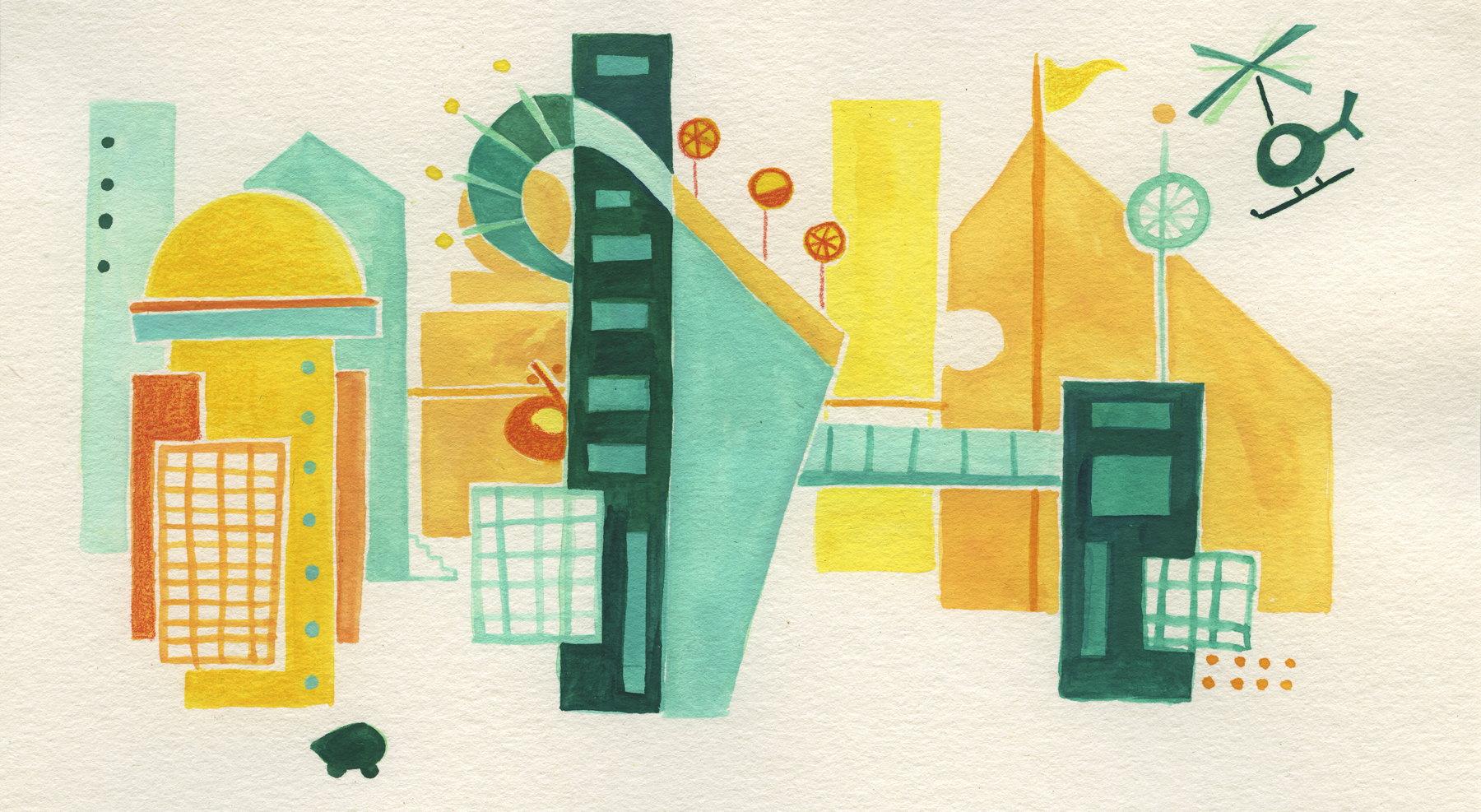Architecture Fiction
Definition
Architecture fiction is a way of exploring and testing alternative built forms and urban environments without the overhead of physically building and testing objects in real life.
Architecture and geography create systems of beliefs, rituals and cultural practices. Architecture fiction is a testbed for reality. It can be a site of ethical dilemma and philosophical simulation. AF can provide a way of exploring alternate systems that may be more efficient or offer more creativity, better living conditions or worse ones. Finally, it can be a way of watching changes that might occur by speeding up or slowing down time, and a way of exploring utopia and dystopia. A fictional narrative allows one to enter safely into a world while exploring possible effects of a slightly different system or ruleset. A writer doesn't require fundraising, politics or grants to simulate a possible future. A writer does not require permission from anyone to explore alternate futures and histories.
In his Defense of Architecture (Fiction), Kazys Varnelis wrote that “instead of absorbing into itself, a Dada Capitalist architecture would look out into the world, creating architecture fiction, a term that Bruce Sterling coined after reading "A Handful of Dust", a piece on modernism by J. G. Ballard[1], to suggest that it is possible to write fiction with architecture.”[2]
Most of architecture fiction doesn't come from architects but urbanists and science fiction writers such as Bruce Sterling, William Gibson and Philip K. Dick. A type of speculative futurism that focuses on urbanism or the built environment and all of the things that happen within that built environment. It can also include the virtual layers as well.
"The sci-fi subgenre is exemplified by short stories such as Bruce Sterling’s “White Fungus,” a post-recession vision of exurbia regained, where farmers grow cash crops on the crabgrass frontier and “derelict buildings [are] gutted and transformed into hydroponic racks,” transforming what was once farmland, before sprawl rolled over it, back into farmland. “Naturally, no (exurban bobos) wanted this logical solution,” writes Sterling".[3]
"Architecture fiction anticipates the future present", [4] says Mark Dery, and "the field becomes almost infinitely more exciting when you realize that architectural projects, by definition, entail the reimagination of how humans might inhabit the earth" writes Bruce Sterling, (and) "how they organize themselves spatially and give shape to their everyday lives".[5]
Science Fiction is not just about people it is about the conditions in which one lives, but the cultural, philosophical, political and physical conditions in which one lives, digital or not. Speculative architecture embedded into a fictional narrative is one way of stepping back from a system and understanding the potentialities of a set of technologies or actions if they were to increase or decrease. M.T. Anderson's book Feed[6] is a dystopian novel about a future in which everyone is connected via hardware network nodes. The book uses embedded network devices to explore themes of class status, connectivity, teenage angst, consumerism and health.
References
- Jump up ↑ Ballard, JG. A handful of dust. The Guardian, Sunday 19 March 2006. http://www.guardian.co.uk/artanddesign/2006/mar/20/architecture.communities Accessed Jun 2011.
- Jump up ↑ Varnelis, Kazys. Varnelis.net. http://varnelis.net/topics_115 "In Defense of Architecture (Fiction) Published March 2, 2009. Accessed Jan 2011.
- Jump up ↑ Ibid.
- Jump up ↑ Dery, Mark. Architecture Fiction: Premonitions of the Present. http://thoughtcatalog.com/2011/architecture-fiction-premonitions-of-the-present Accessed Jun 2011.
- Jump up ↑ Sterling, Bruce. BLDGBLOG enters 2009. WIRED Magazine. http://www.wired.com/beyond_the_beyond/2008/12/bldgblog-enters/ Published December 31, 2008. Accessed Jun 2011.
- Jump up ↑ Anderson, M. T. Feed. Candlewick Press, Cambridge, MA. 2002.
